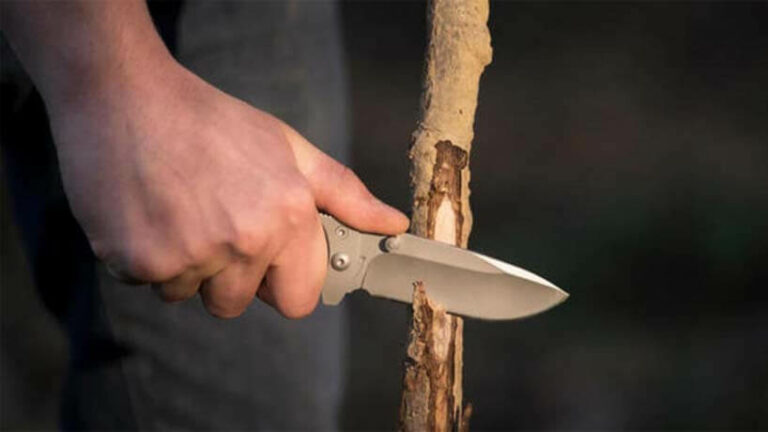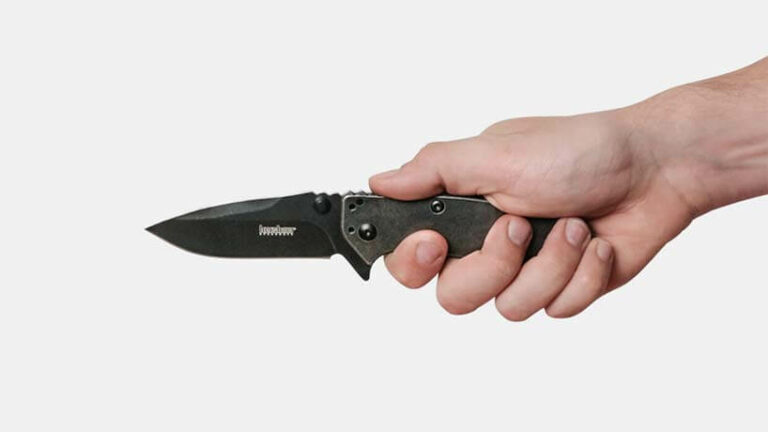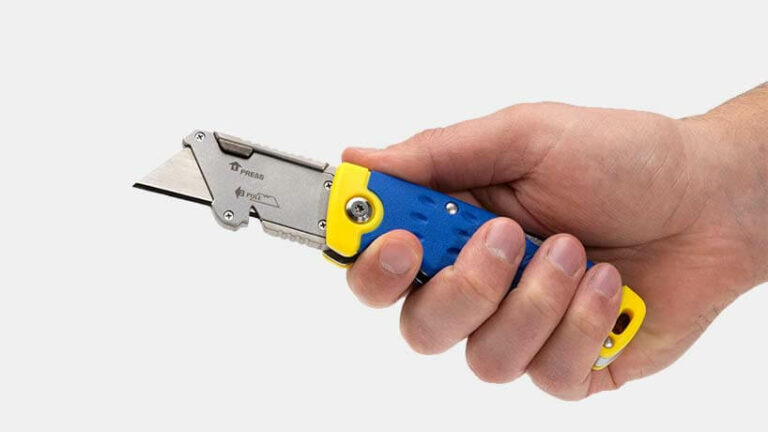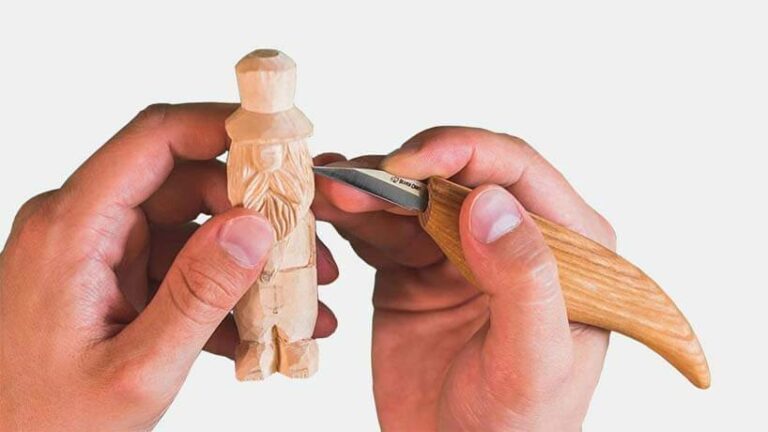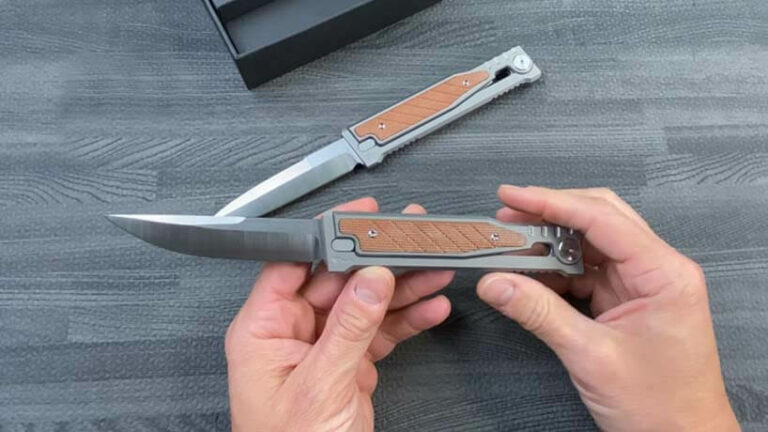Pocket knives are an essential tool when you’re in the outdoors. However, to be fully useful, they need to be sharp. Knowing how to sharpen a pocket knife is an essential skill for those who spend a lot of time outdoors. This is because of how useful pocket knives are. Here’s a quick guide on how to sharpen them properly.
This is because of how useful pocket knives are. Here’s a quick guide on how to sharpen them properly. Pocket knives can cut a lot of things: wood, rope, and more. This can be a lot of help to anyone in the wild. However, a pocket knife is only as useful as its sharp edge.
This is why you need to know how to sharpen a pocket knife, whether it is at home or in some far away place. This article hopes to show you the best way to sharpen a pocket knife. We present to you a simple guide on how to ensure your knife is always sharp.
A Necessary Introduction
If you want to know how to properly sharpen a pocket knife, you are going to have to first know about why you need to sharpen it. For a knife to cut, the edge needs to be in a certain shape. The preferred shape is that of a bevel, which is slanted from the edge. This results in a thin edge that allows for the knife to cut. Most knives have a double beveled edge, resulting a V-shape edge.
This edge is what does all of the cutting. The problem is that the sharp edge is pretty thin and can be pretty fragile. With all the work that a pocket knife does, this edge will eventually degrade. Damage to the edge can come form in microscopic chips or even blunting. This is why sharpening is needed on a regular basis.
The Right Tools
Knowing how to sharpen a pocket knife razor sharp also involves knowing what tools to use. The most basic tool for knife sharpening is sharpening stone. They are known as whetstones and do the job by grinding away the material of your knife. Depending on how coarse the stone is, it can make removing the material easy of have different effects.
The coarser stones, which are usually around 200 grit, can make the edge come out quickly. Finer stones at higher grit counts are used to help polish the knife to get a shine and a sharper edge. The other tool that can help with this is a honing rod. It does the same thing as a whetstone, though it does help straight out the edge more easily than a stone.
There are also automatic knife sharpeners being sold on the market. We don’t recommend using those until you have several years of knife sharpening experience. This is because automatic knife sharpeners can easily damage your knife’s edge. Even if you are experienced, you should take care in using them.
Stones Can Keep Your Knife Sharp
Now that you’ve got a choice of tools, you’re going to have to learn how to use them. The first thing you have to learn is how to sharpen a pocket knife with a whetstone. Whetstones need to be prepared for the job of sharpening. The main way is to pour a liquid on it. There are two types of sharpening stones: oil stones and whetstones.
This refers to what sort of liquid you should use in preparing them since they are both porous in nature. Oil stones require you to pour oil on them because they help block the fragments of metal from entering the stone. It also helps with reducing the heat in the friction of sharpening the knife.
Oil is poured lightly on the stone and spread evenly. Most of the time, previous oil deposits are already there to help make the preparation process easier. Take note that pouring oil on a whetstone can damage it so don’t do that. If you’re using a whetstone, the liquid you’ll be using is water.
Just pour it on the stone until all the air bubbles disappear. Once fully wet with either oil or water, the next step in how to sharpen a pocket knife with a wet stone is to properly position the blade. The bevel is the key to it. You need to angle your blade so that the bevel is in full contact with the sharpening stone.
Lay it flat on the stone and feel the slant of the edge, providing additional support with your hand and fingers. The edge should be pointed away from you. You can then begin sharpening by moving the knife as if you’re slicing away a thin piece of it. When this is done, reverse the edge and slice in the opposite direction.
This ensures that your pocket knife will have an even treatment on both sides. To check if you’ve done a good job of sharpening, raise the knife’s edge to the light. A dull knife will have a shiny edge, while a sharp edge will have no shine at all.
Using a Rod

Stones are usually for when you are on the road. When you are at home, there is a different way in how to sharpen a pocket knife at home. This is because you have access to more tools. One of these is a honing rod. There is a different approach in how to sharpen a pocket knife with a rod.
For one, it is done dry. All you need to do is set the honing rod up standing, while you hold it steady with your one hand. It should be a solid surface with no chance of slipping so that there will be no accidents. The next thing that you will have to do is to position the blade properly. Hold your knife to the rod by its bevel edge, which is usually angled at around 20 to 30 degrees.
Just draw your knife down the rod, keeping the edge in contact with it. The movement should be smooth and have gentle pressure. Do this a few times for both sides of the knife. You then check for sharpness to see if the knife needs further treatment.
Emergency Needs
Sharpening a knife with tools is simple. However, sometimes you may have to do some emergency knife sharpening. If this happens, you will need to know how to sharpen a pocket knife without a stone or a rod. There are actually several helpful tools that you can use to sharpen your pocket knife. Here’s a brief list:
Take note that these are only emergency substitutes. When you have access to your sharpening tools again, it’s best to do a proper sharpening.
A Special Case
Some pocket knives don’t have the clear edges of normal knives. They use serrated edges that can be a challenge. The way how to sharpen a serrated knife is a lot different than your normal approach. The factor you have to remember is that it is like having dozens of separate edges on one knife, which makes it complicated.
The simplest way to do is by using a honing rod. To properly sharpen a serrated edge, you need to sharpen each individually. This is done by doing the reverse of the usual process. The rod will be the one moving instead of the knife. Lay down the knife and identify the bevel edges.
You then need to lay down the rod across the first edge. When you’ve properly set it up, you then draw the honing rod in a circular motion. This will give you and even grind on each edge. After each stroke, check the knife edge for any burrs or metal shavings. When you detect it, this means that the edge has been sharpened.
It is then time to move on the next edge. Repeat the above process until you have gone through all the serrated edges. When done, you will need to file away the burrs at the knife edge. Use fine-grit sandpaper so that the knife will have a solid shine to it.
Being Prepared
When you know how to sharpen a pocket knife, you can be assured about its fitness at doing the job. Whether you do it via a whetstone or a honing rod, proper sharpening ensures that your knife is always in top condition and can handle the rigors of outdoors. Check your pocket knife out now to see if it needs a quick sharpening.


